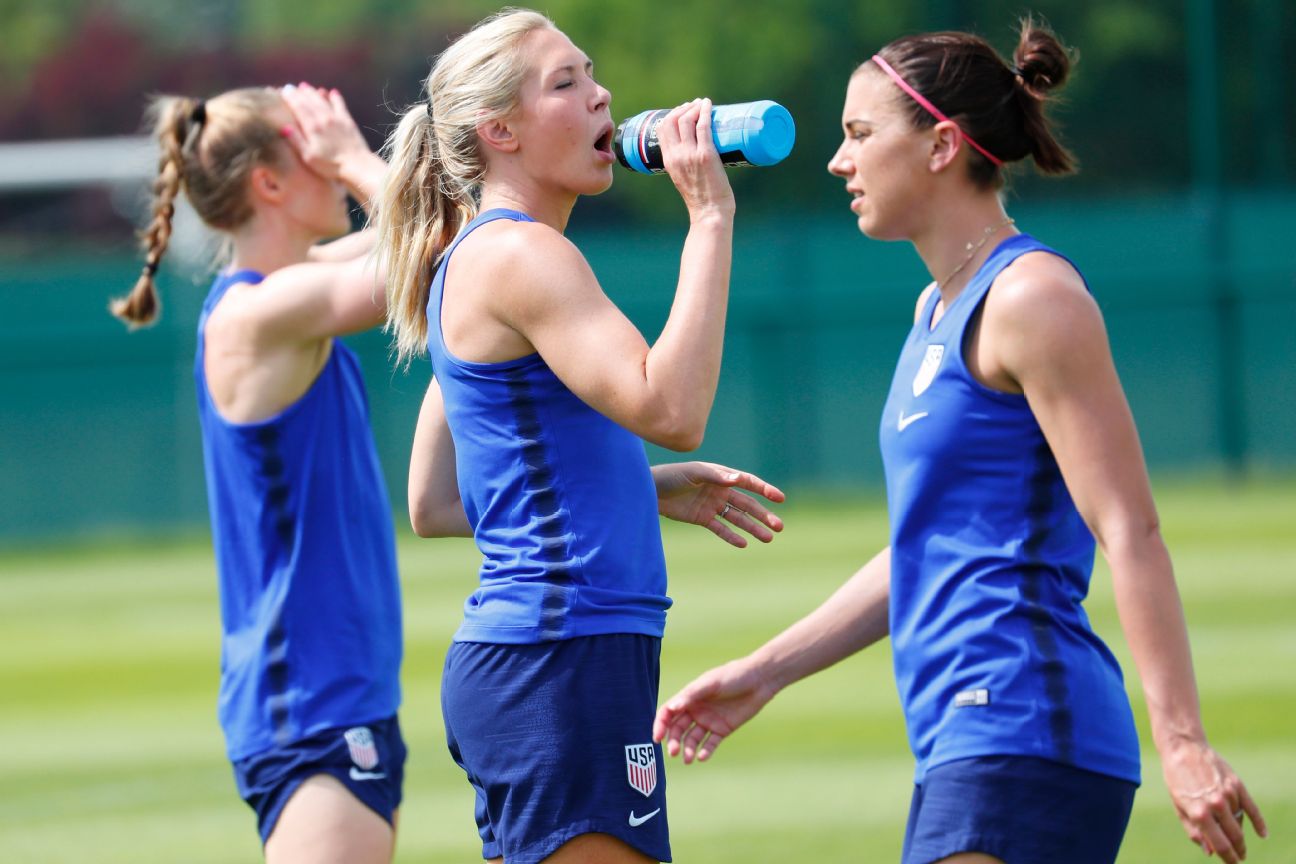A record heat wave in France could lead FIFA to put match provisions in place ahead of play Friday at the Women’s World Cup.
With the French national team set to face the United States in a quarterfinal clash at Parc des Princes in Paris, the temperature is expected to reach 95 degrees (35 Celsius) at the day’s hottest point, and drop to around 83 degrees (28 Celsius) by kickoff at 9 p.m. local time/3 p.m. ET.
FIFA may implement cooling breaks for players, with three-minute pauses for water at the 30- and 75-minute marks, if temperatures reach 90 degrees (32 Celsius) inside stadiums.
Earlier in the week, FIFA allowed fans to bring their own bottles of water into Parc des Princes before a Round of 16 match between Sweden and Canada.
This isn’t the first time the World Cup has been faced with weather protocols. Weather breaks were first allowed during the 2014 men’s World Cup in Brazil during similar stretches of sweltering heat. If the weather is extreme enough, FIFA said it would consider postponing games, but that does not seem likely for Friday’s match.
Schools in some regions of France closed Thursday as temperatures pushed 110 degrees (45 Celsius), and only low-emission vehicles were allowed to drive in Paris and Lyon.
U.S. players are familiar playing in heat, both in international games and domestically in the National Women’s Soccer League. Unlike most European professional leagues, which run from fall to spring, the NWSL season runs through the summer in climates like Cary, North Carolina; Orlando, Florida; and Houston. The league implemented enhanced heat provisions in 2017 after the Houston Dash’s Rachel Daly, now a member of the England national team. collapsed with what was diagnosed as heat illness at the end of a game on a day when temperatures reached 90 degrees.
“I definitely think that it’s not something that we’re that worried about,” U.S. midfielder Sam Mewis said this week, “Because we do have a lot of experience playing in the heat.”
The U.S. played in similar conditions in two of its final three warmup games. Temperatures reached 90 degrees in St. Louis on May 16, when the U.S. played New Zealand in the evening, and in Harrison, New Jersey, on May 26, when the U.S. played Mexico in the early afternoon. No additional heat measures were in place during those games.
England coach Phil Neville said his team has also planned for any scenario.
“I actually like it being hot, I really do — my players like it being hot. We feel good in the heat,” he told reporters earlier this week. “We’ve had two weeks in St George’s Park where the players basically lived in a sauna — literally the sauna, that’s not no air-conditioning, at St George’s Park.
“We’ve had no surprises so far. We’re fully aware it’s going to be hot, and one thing that won’t happen is the ball won’t get tired if we keep passing it.”
Information from the Associated Press, Reuters and ESPN’s Tom Hamilton and Graham Hays was used in this report.
